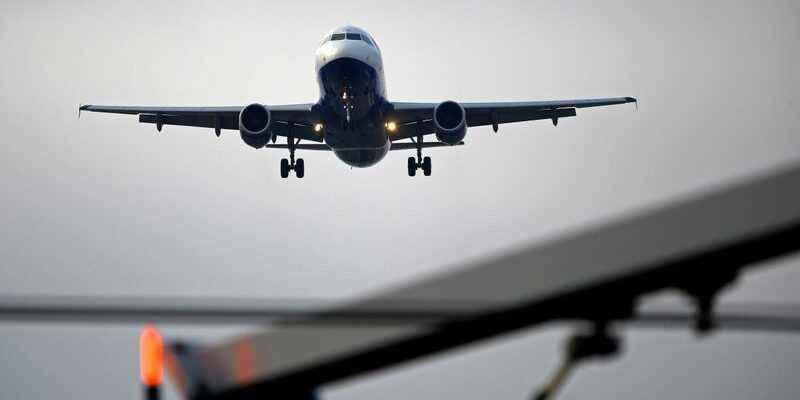AerCap provides its customers with small, medium and large carriers, freighters, but also helicopters and aircraft engines (extremely expensive maintenance parts that are rented individually and assembled or disassembled as needed) . Its fleet has 3,700 aircraft, including 355 helicopters, which have an average lifespan of 7 years (rather at the top of the basket), as well as 900 engines. If the lessor equips 300 companies in 80 countries, three of them alone represent a fifth of turnover: Air France (for 5% of revenues), then American Airlines and China Southern (15% between them).
The group is 46% owned by the American GE, the world’s leading manufacturer of engines for civil aviation far ahead of the British Rolls-Royce, which thus ensures a permanent commercial outlet.
Clear skies and favorable management
The industry in which AerCap operates is oligopolistic, resilient and has insurmountable barriers to entry. However, the profitability of the assets remains structurally limited, because if the airlines have an obvious interest in leasing a large part of their fleets – in order to reduce their already considerable fixed cost structures – they are also not inclined to concede to the lessor excessive capture of the economic value of assets: a balance point must therefore be found.
AerCap is a group whose management, on the whole, is remarkably well inspired: it has enlarged its fleet via two perfectly executed external growth operations, each time with ideal timing. In 2013, he acquired ILFC when AIG separated from it following its bankruptcy in 2008, then, at the end of 2021, he took over GECAS (General Electric Capital Aviation Services) during the painful restructuring of GE , led by Larry Culp. These two acquisitions were piloted in a context of crisis, which gave the targets attractive valuations, and are the sign of prudent and reasoned growth.
Over the last decade, these operations have enabled AerCap to multiply its turnover by 4 and its book profit by ten. On the cash flow side, the activity is of course hyper capital intensive, but the dynamic has been positive since the acquisition of ILFC. Over the full cycle (2011-2021) Aercap thus generates $6 billion in free cash flow, returned almost entirely to shareholders via share buybacks. This capital allocation makes more sense than distributing dividends, because AerCap is structurally discounted due to its considerable financial leverage.
Storm-proof profitability
For the future, it is difficult to estimate the real earnings capacity of the company, because of the distortions linked to the pandemic and the acquisition of GECAS. But it seems reasonable to project a profit of at least $2 or $2.5 billion this year, and $3 to $4 billion in the very near future. The current market capitalization is under 10 billion, so between x3 and x5 the profits.
We can also (for trading and momentum enthusiasts) expect rental rates to rise over the coming quarters. Indeed, during the pandemic, Boeing and Airbus partially shut down their assembly lines, so that all deliveries of new aircraft are delayed. In a context where demand is exploding – especially at the moment with the opening of the summer season – a possible increase in prices is therefore possible.
Note the structural discount of 30% on equity which persists throughout the cycle, even though the company has a satisfactory profitability history and a normalized ROE of 10% per year. On paper, the share therefore appears very affordable and the allocation of capital, 100% geared towards share buybacks, makes perfect sense.

However, it should be kept in mind that the group faces considerable debt (40 billion dollars in net debt). We may therefore prefer to refer to the enterprise value (ie market capitalization + long-term debt) and there, of course, the valuation appears less attractive.
In reality, anyone who invests in AerCap is betting that the company will never have any trouble refinancing its debt, which in itself is a reasonable assumption given the strategic nature of its assets and the resilience of its business, except in the event of an extreme scenario, such as a new pandemic or world war, of course. Furthermore, it is relevant to note that even in the midst of a pandemic, AerCap remained profitable with all the necessary liquidity available. A “stress test” successfully passed!
The group’s refinancing risk is also limited. If the reference shareholder, General Electric, is not in the most comfortable financial position, it remains a solid partner with deep pockets.
Clear roadmap
The current rise in interest rates should not cause serious harm to society, because, historically, rental rates are precisely indexed to interest rates. The market’s perception, according to which it would be necessary to separate from indebted companies since the Fed’s rate hike announcements, is therefore perhaps incorrect.
An investment in AerCap is therefore not necessarily absurd, but it is reserved for an informed public: you have to accept to digest a considerable leverage… and a certain macroeconomic imponderable, such as the recent confiscation group aircraft stationed in Russia.
